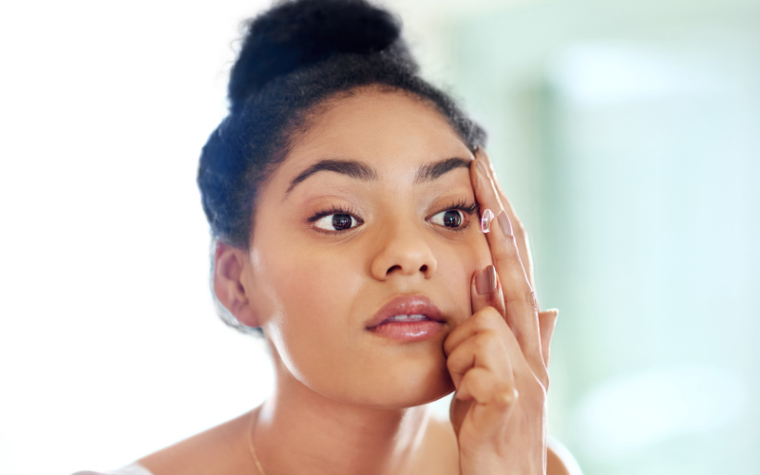All Categories
Featured
Reduced vision, a problem where traditional glasses, get in touch with lenses, or surgery can not completely recover sight, can make daily activities testing. Thankfully, low vision rehabilitation uses a variety of resources to help people maintain their self-reliance and high quality of life. This write-up discovers the options offered for those seeking assistance in handling their aesthetic problems.
What Is Reduced Vision Rehab?
Reduced vision rehabilitation is an organized approach to assist individuals maximize their remaining vision and adjust to brand-new methods of executing daily tasks. Experts function with clients to develop individualized techniques, including devices, methods, and training programs that match their distinct demands.
![]()
Key Options for Reduced Vision Recovery
Vision Enhancing Instruments
Optical Aids: Instruments like magnifiers, telescopic glasses, and unique reading lenses can boost clearness for analysis, creating, and other close-up tasks.
Digital Aesthetic Aids: Devices such as digital magnifiers and mobile video magnifiers provide adjustable zoom capabilities for different jobs.
Wearable Innovation: Smart glasses furnished with electronic cameras and voice comments deal innovative solutions for enhancing vision.
![]()
Assistive Modern Technology
Display visitors, text-to-speech applications, and tools with voice commands make modern technology easily accessible for people with low vision.
Smart device applications, such as navigation aids and item recognition tools, aid individuals communicate with their environments much more properly.
Training and Treatment
Alignment and Movement Training: Experts teach skills for browsing areas securely, including using white canes or overview dogs.
Daily Living Skills Educating: Rehabilitation programs give techniques for food preparation, cleaning, and personal care, ensuring that individuals can do crucial jobs separately.
Aesthetic Abilities Training: Workouts created to optimize making use of continuing to be peripheral vision can boost visual capability.
Environmental Adjustments
Adjustments to living or workspaces can dramatically enhance availability. Instances include:
Installing brighter illumination.
Including high-contrast markings to home appliances.
Setting up furniture to produce clear paths.
Support Networks
Mental and psychological support is a critical part of rehab. Support groups, treatment sessions, and therapy solutions can aid people deal with the obstacles of vision loss.
![]()
Peer networks link people with similar experiences, promoting a feeling of community and shared understanding.
How to Gain Access To Low Vision Rehab Solutions
Low vision rehabilitation services are usually offered by:
Low Vision Clinics: Operated by eye doctors and eye doctors focusing on vision impairments.
Physical Therapists: Professionals in adapting atmospheres and tasks to suit private needs.
Nonprofit Organizations: Teams such as the American Foundation for the Blind (AFB) or local loss of sight support organizations use valuable sources and referrals.
Final Thought
Living with reduced vision can feel frustrating, but with the right support and devices, people can proceed to lead meeting lives. Low vision recovery gives a selection of resources tailored to boost capability, increase self-confidence, and improve top quality of life. If you or a loved one is dealing with the challenges of low vision, take into consideration connecting to a specialist or rehabilitation facility to explore the several choices available. Together, these remedies guarantee that vision loss does not define or restrict one's possibility.
What Is Reduced Vision Rehab?
Reduced vision rehabilitation is an organized approach to assist individuals maximize their remaining vision and adjust to brand-new methods of executing daily tasks. Experts function with clients to develop individualized techniques, including devices, methods, and training programs that match their distinct demands.

Key Options for Reduced Vision Recovery
Vision Enhancing Instruments
Optical Aids: Instruments like magnifiers, telescopic glasses, and unique reading lenses can boost clearness for analysis, creating, and other close-up tasks.
Digital Aesthetic Aids: Devices such as digital magnifiers and mobile video magnifiers provide adjustable zoom capabilities for different jobs.
Wearable Innovation: Smart glasses furnished with electronic cameras and voice comments deal innovative solutions for enhancing vision.

Assistive Modern Technology
Display visitors, text-to-speech applications, and tools with voice commands make modern technology easily accessible for people with low vision.
Smart device applications, such as navigation aids and item recognition tools, aid individuals communicate with their environments much more properly.
Training and Treatment
Alignment and Movement Training: Experts teach skills for browsing areas securely, including using white canes or overview dogs.
Daily Living Skills Educating: Rehabilitation programs give techniques for food preparation, cleaning, and personal care, ensuring that individuals can do crucial jobs separately.
Aesthetic Abilities Training: Workouts created to optimize making use of continuing to be peripheral vision can boost visual capability.
Environmental Adjustments
Adjustments to living or workspaces can dramatically enhance availability. Instances include:
Installing brighter illumination.
Including high-contrast markings to home appliances.
Setting up furniture to produce clear paths.
Support Networks
Mental and psychological support is a critical part of rehab. Support groups, treatment sessions, and therapy solutions can aid people deal with the obstacles of vision loss.

Peer networks link people with similar experiences, promoting a feeling of community and shared understanding.
How to Gain Access To Low Vision Rehab Solutions
Low vision rehabilitation services are usually offered by:
Low Vision Clinics: Operated by eye doctors and eye doctors focusing on vision impairments.
Physical Therapists: Professionals in adapting atmospheres and tasks to suit private needs.
Nonprofit Organizations: Teams such as the American Foundation for the Blind (AFB) or local loss of sight support organizations use valuable sources and referrals.
Final Thought
Living with reduced vision can feel frustrating, but with the right support and devices, people can proceed to lead meeting lives. Low vision recovery gives a selection of resources tailored to boost capability, increase self-confidence, and improve top quality of life. If you or a loved one is dealing with the challenges of low vision, take into consideration connecting to a specialist or rehabilitation facility to explore the several choices available. Together, these remedies guarantee that vision loss does not define or restrict one's possibility.
Latest Posts
Wood Fencing Solutions - Custom Installation by Idaho Fence.
Published Feb 01, 25
1 min read
Top-Rated Idaho Fence Services - Expert Fence Installation & Repair Services.
Published Feb 01, 25
1 min read
Navigating Life with Reduced Vision: Rehab Options and Resources
Published Feb 01, 25
0 min read
More
Latest Posts
Wood Fencing Solutions - Custom Installation by Idaho Fence.
Published Feb 01, 25
1 min read
Top-Rated Idaho Fence Services - Expert Fence Installation & Repair Services.
Published Feb 01, 25
1 min read
Navigating Life with Reduced Vision: Rehab Options and Resources
Published Feb 01, 25
0 min read